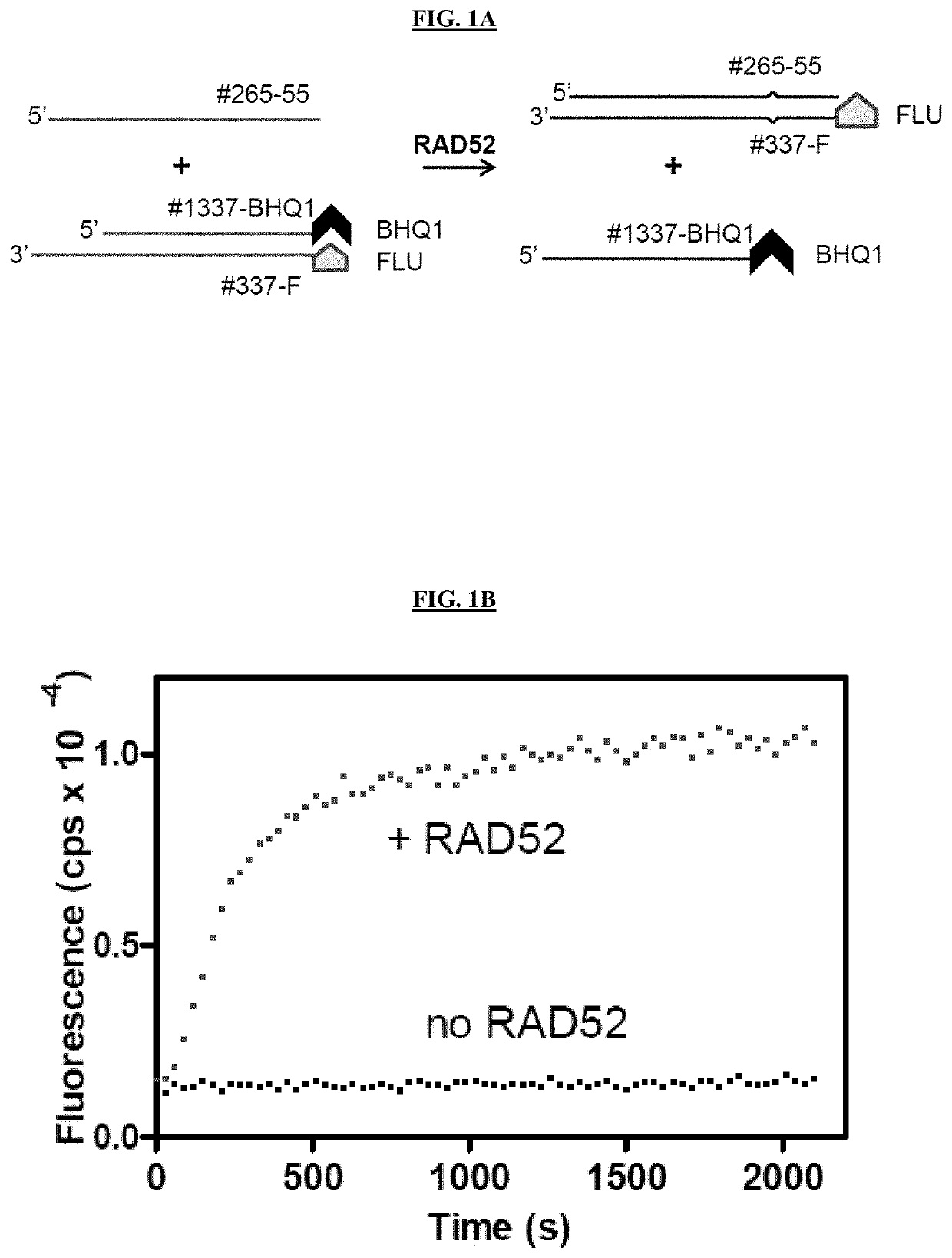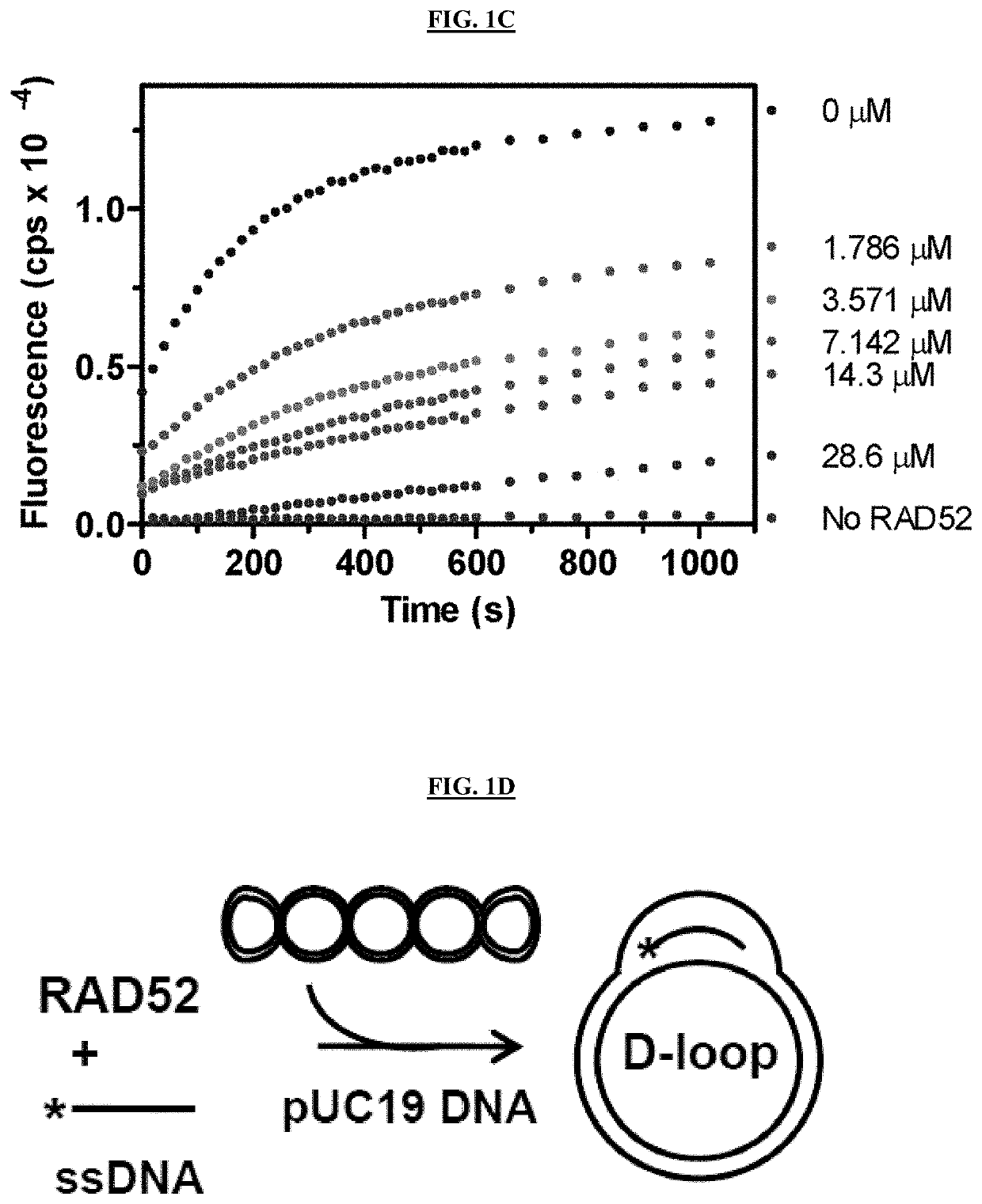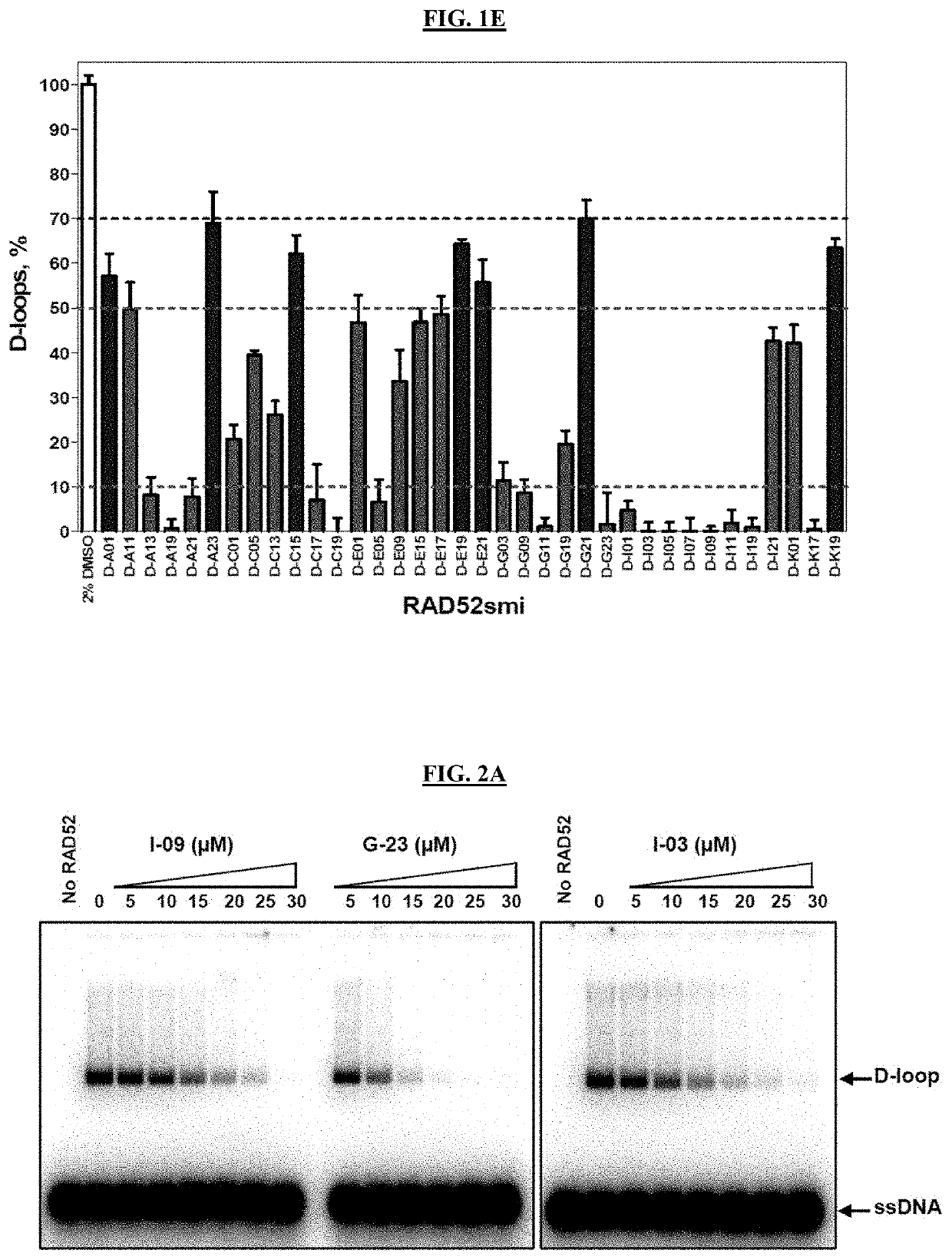Inhibitors of RAD52 Recombination Protein and Methods Using Same
a technology of rad52 and rad52, which is applied in the direction of heterocyclic compound active ingredients, organic chemistry, drug compositions, etc., can solve the problems of dna repair pathway disruption, and cancer cells often lose some dna repair pathways
- Summary
- Abstract
- Description
- Claims
- Application Information
AI Technical Summary
Benefits of technology
Problems solved by technology
Method used
Image
Examples
example 1
ughput Screening (HTS) for RAD52 Inhibitors
[0219]Small molecule inhibitors of RAD52 were discovered using high throughput screening (HTS) of compound libraries. In vitro, RAD52 carries out annealing of complementary ssDNA molecules and an invasion of ssDNA into homologous duplex DNA. A fluorescence-quenching assay was used to screen for inhibitors of RAD52 ssDNA annealing activity (FIGS. 1A-1E). In this assay, RAD52 promotes DNA annealing between homologous synthetic ssDNA (Oligo 265-55; 55 nt / SEQ ID NO: 3) and tailed dsDNA (tdsDNA) substrates. The tdsDNA was generated by thermal annealing of an ssDNA 60-mer (Oligo 337-FLU, SEQ ID NO: 1) carrying fluorescein (FLU), a fluorescence donor group, and an ssDNA 39-mer (1337-BHQ1 / SEQ ID NO: 2) carrying black hole quencher 1 (BHQ1), a non-fluorescent acceptor group (FIG. 1A). Annealing promoted by RAD52 between ssDNA and tdsDNA led to displacement of the FLU-carrying DNA strand from the tdsDNA and in an increase in fluorescence due to seces...
example 2
of RAD52 Inhibitors in Human BRCA1- and BRCA2-Deficient Cells
[0223]The effects of 14 RAD52 inhibitors identified in the biochemical assays were tested on the growth of BRCA2-deficient Capan-1 cells and BRCA2-proficient BxPC3 cells. Five of the tested inhibitors preferentially suppressed the growth of Capan-1 cells (FIGS. 3A-3D).
[0224]Likewise, the effects of RAD52 inhibitors on the growth of BRCA1-deficient (UWB1.289 BRCA1−) and BRCA1-proficient (UWB1.289 BRCA+) cells were tested. 7 out 14 tested RAD52 inhibitors preferentially suppress the growth of BRCA1-deficient cells. Importantly, these 7 compounds included the 5 compounds that inhibited the growth of BRCA2-deficient cells (FIGS. 3E-3H). The effects of the 14 RAD52 inhibitors were tested on the survival of another BRCA1-deficient cells, and MDA-MB-436 cells. Three out 14 compounds, which also inhibited growth of UWB1.289 cells, showed an inhibitory effect on these cells compared with the isogenic MDA-MB-436 (BRCA1+) cells (FIG....
example 3
nt of Inhibitors Binding to RAD52 by SPR
[0226]RAD52 inhibitors were tested to show activity in the biochemical and cell-based assays physically interact with RAD52. D-I03 (3.12-50 μM) and D-G23 (3.12-25 μM) have been demonstrated to bind directly to RAD52 (FIG. 5) using the surface plasmon resonance (SPR) method. The anti-HIV mAb 2F5 structurally unrelated to RAD52 was used in control and non-specific binding signal was subtracted from the RAD52 binding signal.
[0227]The Kd values for D-I03 and D-G23 are 26.1±4.5 μM and 34.0±8.9 μM, respectively. These values are somewhat higher than one might expect from the IC50 values in the biochemical and cell-based assays with these inhibitors. Without wishing to be limited by any theory, because the active form of RAD52 is a hexamer, the apparent differences in the activities of inhibitors may suggest that inhibition of RAD52 requires only partial saturation of the RAD52 hexamer with inhibitors. D-I03 and D-G23 did not bind DNA using the acrid...
PUM
 Login to View More
Login to View More Abstract
Description
Claims
Application Information
 Login to View More
Login to View More - R&D
- Intellectual Property
- Life Sciences
- Materials
- Tech Scout
- Unparalleled Data Quality
- Higher Quality Content
- 60% Fewer Hallucinations
Browse by: Latest US Patents, China's latest patents, Technical Efficacy Thesaurus, Application Domain, Technology Topic, Popular Technical Reports.
© 2025 PatSnap. All rights reserved.Legal|Privacy policy|Modern Slavery Act Transparency Statement|Sitemap|About US| Contact US: help@patsnap.com



